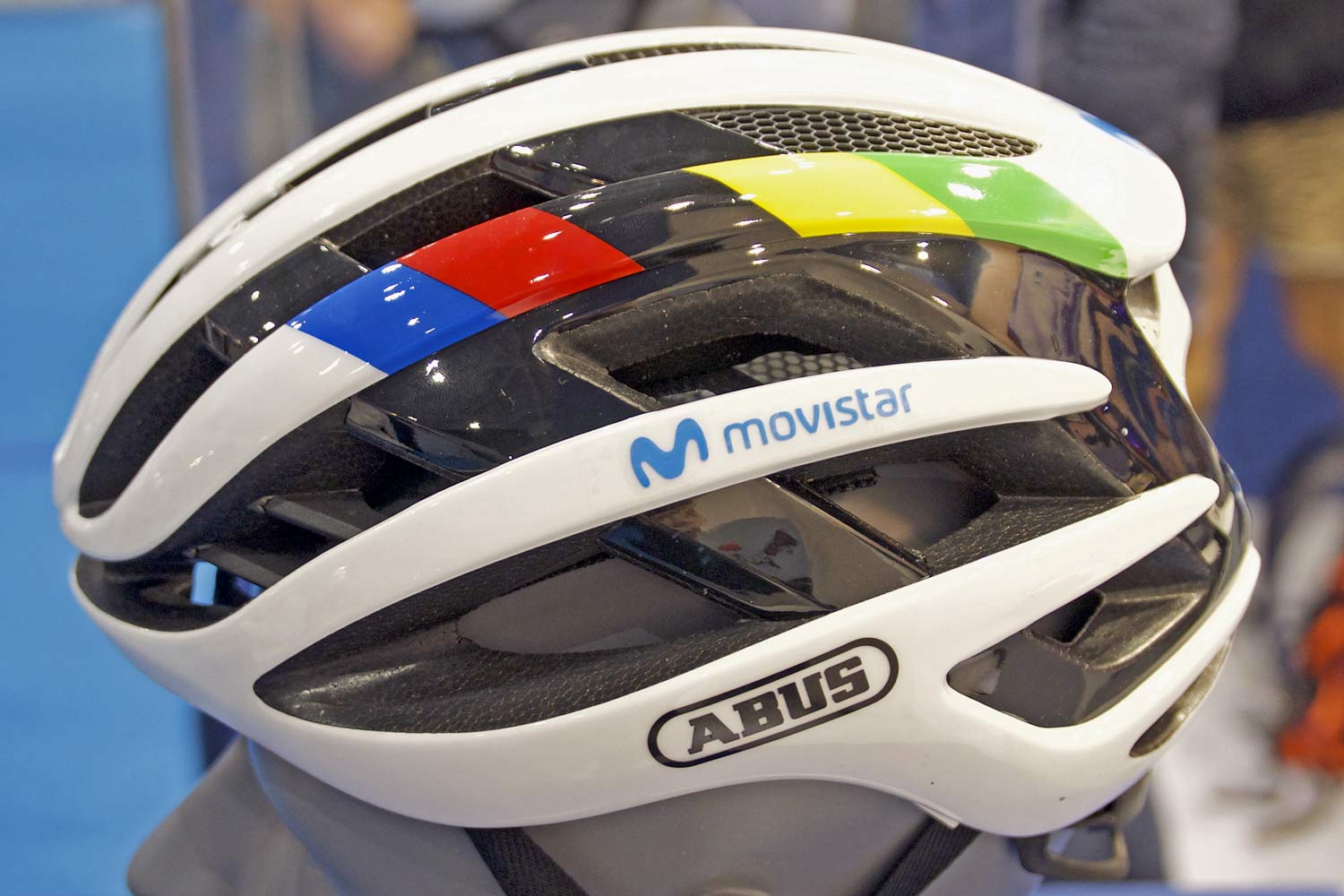We got an early look at the new Abus AirBreaker back in late March in Taiwan, told it matched or outperformed their other road helmets on almost every metric. Most of the aero gains of the closed top GameChanger. Ventilation on par with of the open Aventor. Lighter than either of its predecessors, with a new special cooling system design. As someone that sweats a lot, I figure a new well-vented, semi-aero helmet is always worth a try.
Abus AirBreaker vented, aero road bike helmet
The new Abus AirBreaker helmet only officially debuted about a month ago, but mixing aerodynamic benefits & excellent ventilation, it has already earned a set of rainbow stripes, ridden to a road World Championship win last fall by Alejandro Valverde. Having got an early glimpse at the new helmet back in March
 As someone who struggles with my head being hot whenever I put in hard efforts riding in the spring, summer & fall, most aero helmets get relegated to cold weather use for me. But this helmet was developed specifically with Abus’ sponsored Movistar riders for hot summer road racing where they didn’t want to leave any potential aero gains on the table.
As someone who struggles with my head being hot whenever I put in hard efforts riding in the spring, summer & fall, most aero helmets get relegated to cold weather use for me. But this helmet was developed specifically with Abus’ sponsored Movistar riders for hot summer road racing where they didn’t want to leave any potential aero gains on the table.
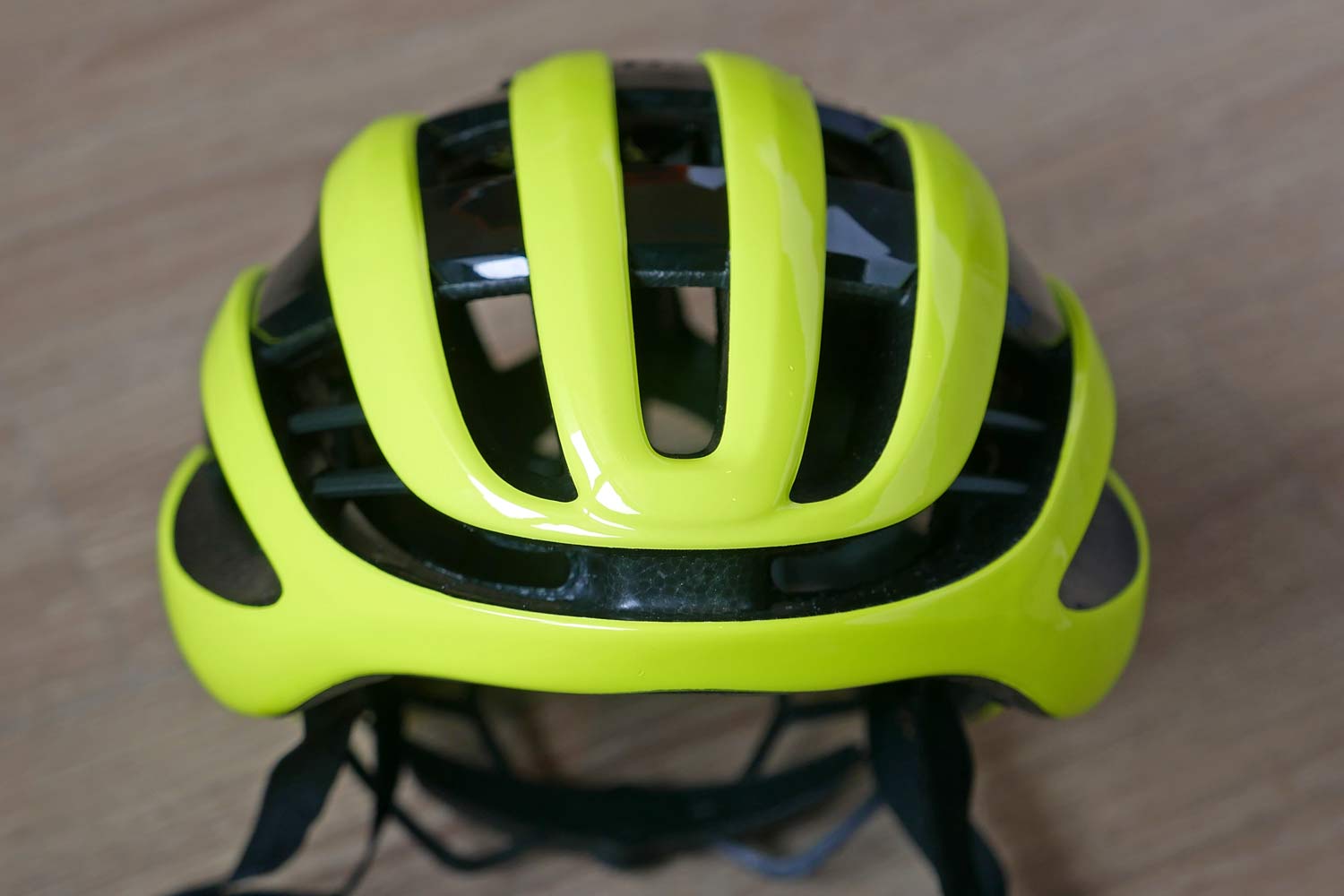 So Abus took the general shape of their aero road GameChanger helmet and started whittling away material to get more air inside. Many riders already say the GameChanger works well in hot weather as it has pretty good airflow through, plus your head is protected from the sun.
So Abus took the general shape of their aero road GameChanger helmet and started whittling away material to get more air inside. Many riders already say the GameChanger works well in hot weather as it has pretty good airflow through, plus your head is protected from the sun.
But the new AirBreaker opens the front up event more for increase airflow, in what Abus calls ‘forced air cooling’ that pushes air through the helmet’s internal channels.
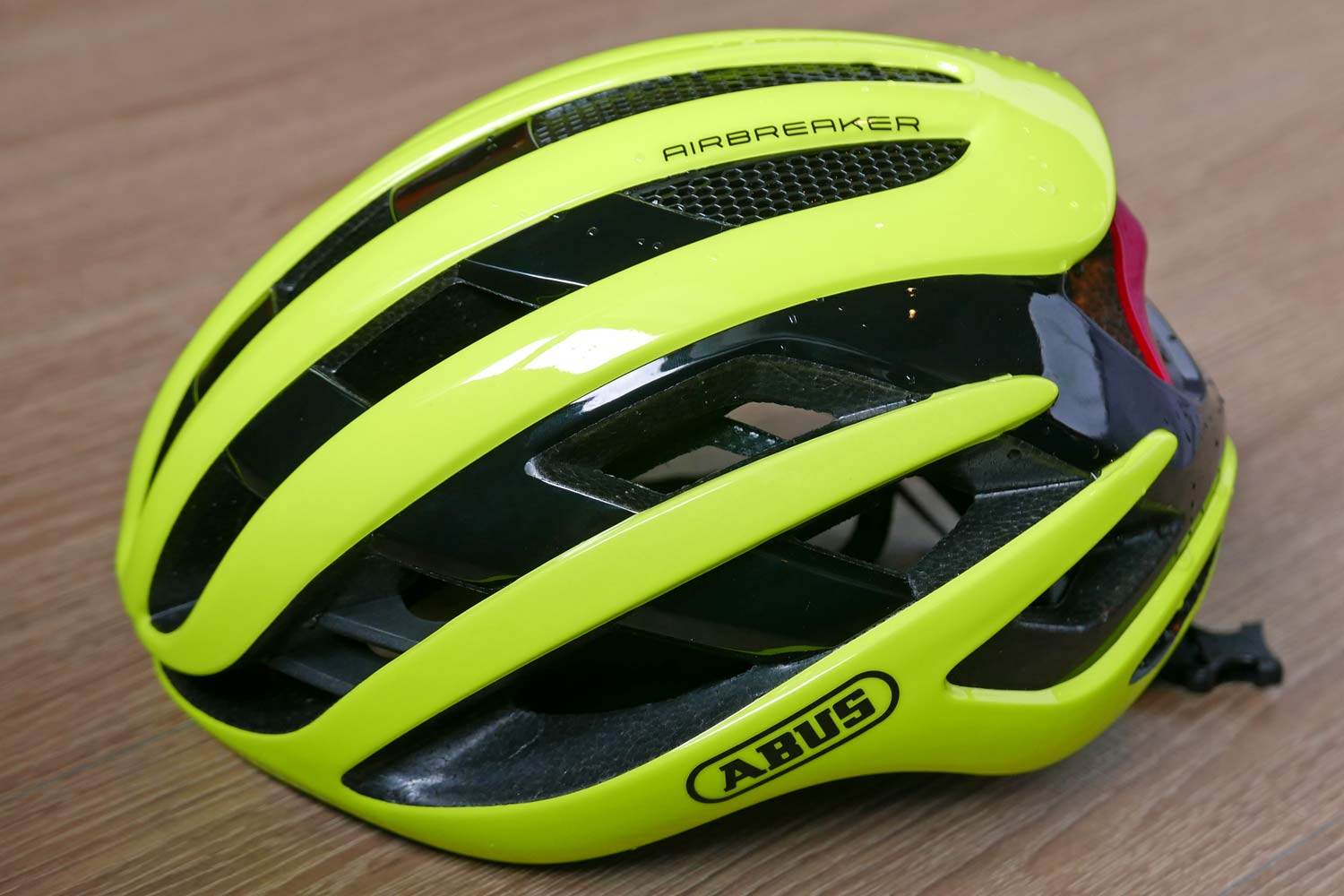 Around the sides, they also tried to keep the AirBreaker open, while creating an open honeycomb pattern across the top that is meant to keep smooth airflow past the helmet, while letting heat escape.
Around the sides, they also tried to keep the AirBreaker open, while creating an open honeycomb pattern across the top that is meant to keep smooth airflow past the helmet, while letting heat escape.
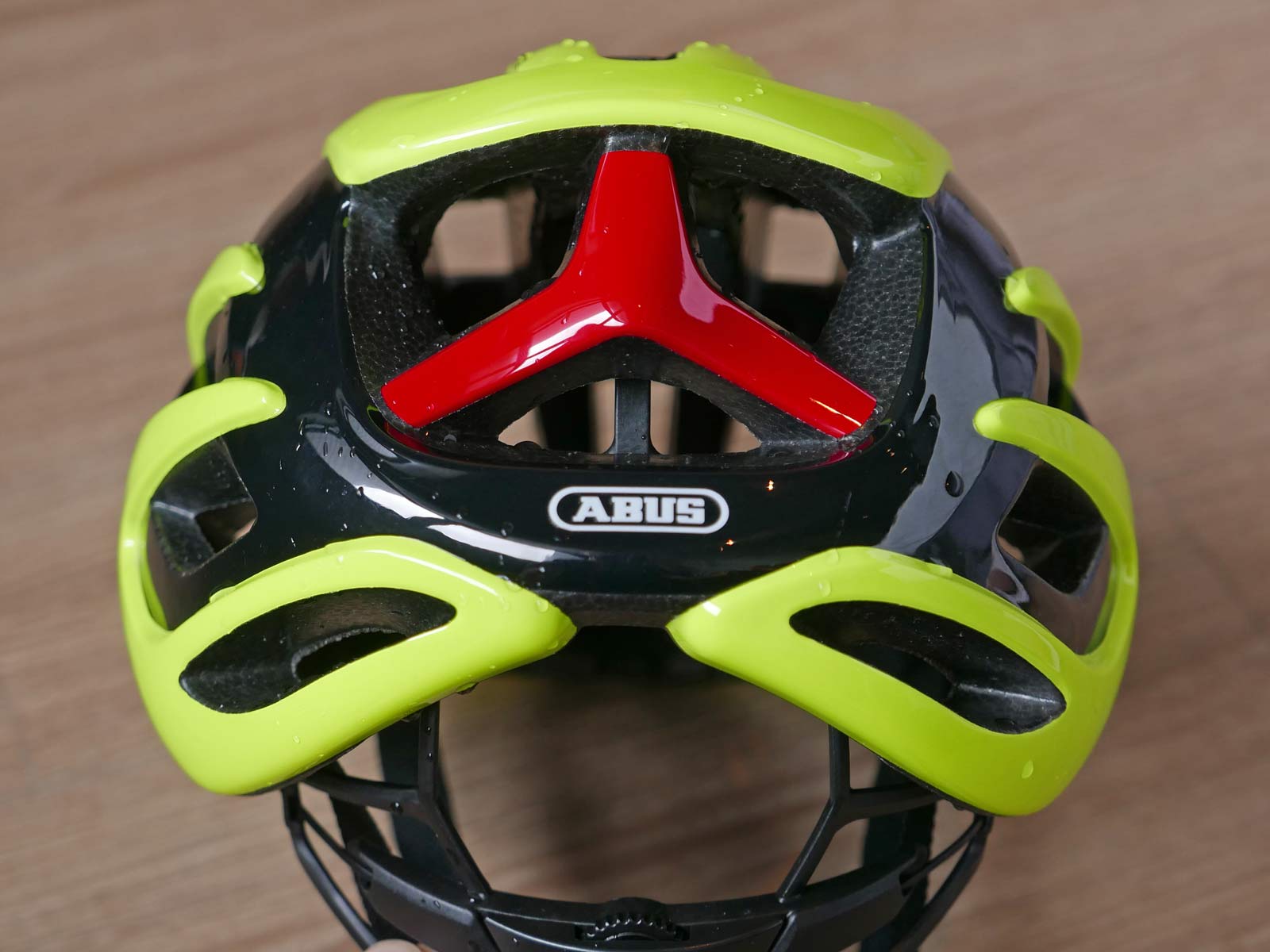 The rear of the AirBreaker takes shaping directly from the GameChanger again, yet in a slightly more open design to exhaust hot air out the back.
The rear of the AirBreaker takes shaping directly from the GameChanger again, yet in a slightly more open design to exhaust hot air out the back.
Retention is handled by the light & open Zoom Ace dial, which also offers vertical fit adjustment. Another signature Abus element are the thin, lightweight straps that don’t move in the wind because of a different textures weave on their leading edge.
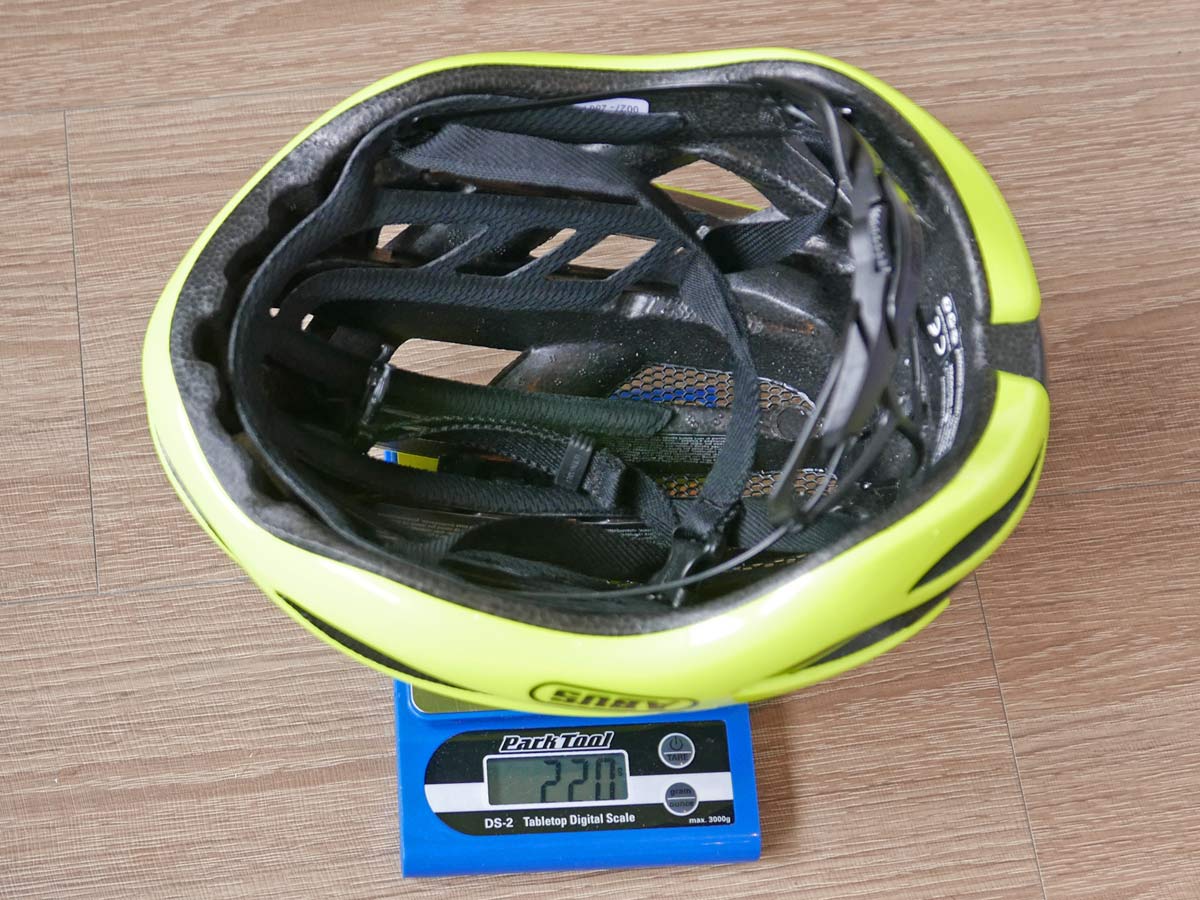 The AirBreaker uses a pretty conventional EPS foam energy absorption layer inside a multi-part in-mold polycarbonate shell. Inside the foam an ActiCage Lite internal cage reinforces the EPS allowing for large openings and structural integrity during a crash.
The AirBreaker uses a pretty conventional EPS foam energy absorption layer inside a multi-part in-mold polycarbonate shell. Inside the foam an ActiCage Lite internal cage reinforces the EPS allowing for large openings and structural integrity during a crash.
Abus claims a weight of 220g for my size medium, European certified helmet, which is exactly what it weighed on our scale.
Riding review of the tech features
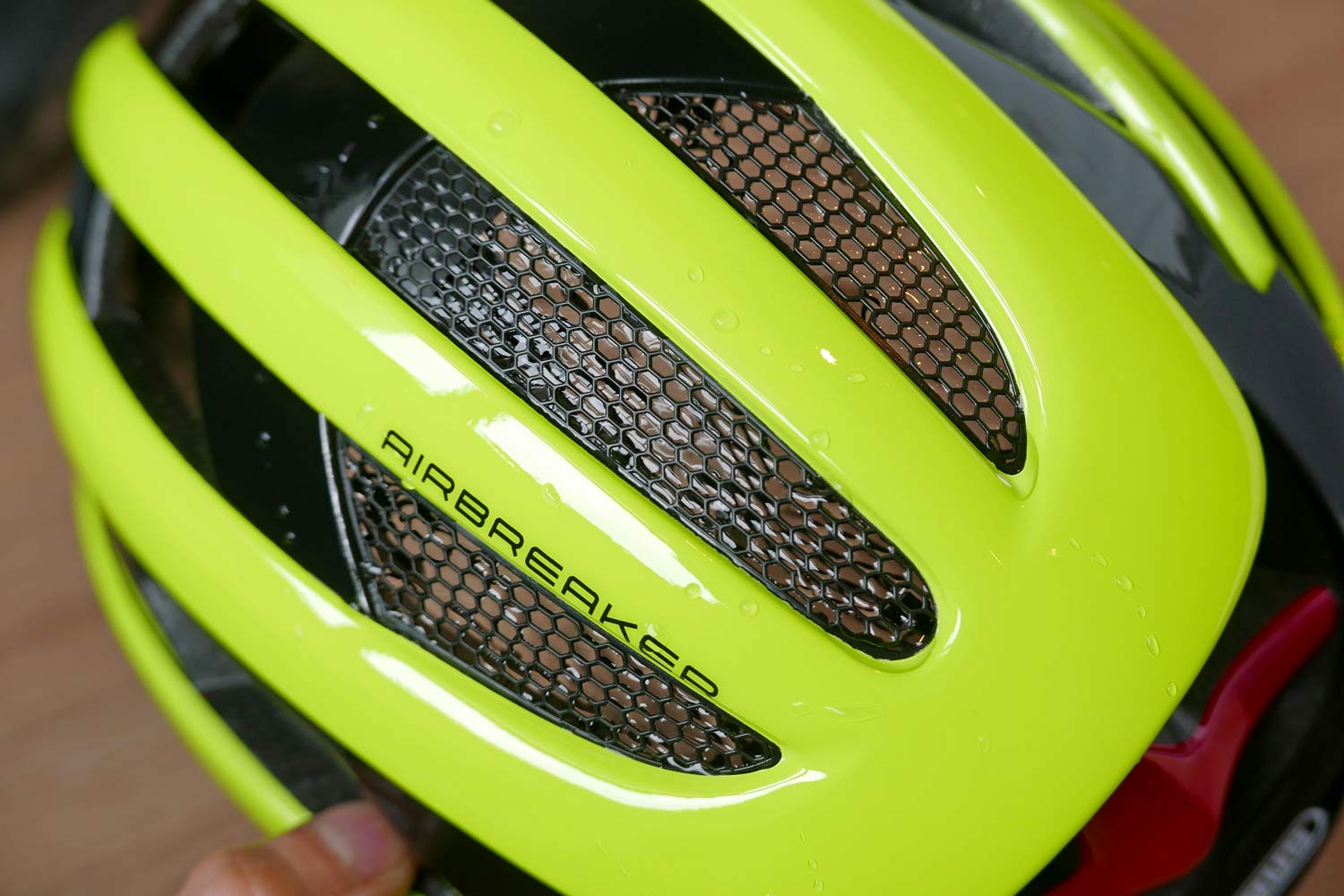 That honeycomb structure on the top of the helmet is claimed to deliver smooth airflow while also offering the chance for more evaporative cooling. I’ve seen (& ridden) a number of helmets that you are supposed to squirt your water bottle into to cool you down. But I am usually already sweating enough to have no need to really make my head any wetter. But playing with the AirBreaker’s honeycombs, it is clear that the plastic pattern actually holds the water on the outside shell of the helmet (thanks to surface tension), so it will cool your head, without making it wetter. I have only played with it a bit in warm spring conditions, where it is hard to notice the effect. But I am genuinely looking forward to breaking out the water bottle on super hot summer rides to give it a further test.
That honeycomb structure on the top of the helmet is claimed to deliver smooth airflow while also offering the chance for more evaporative cooling. I’ve seen (& ridden) a number of helmets that you are supposed to squirt your water bottle into to cool you down. But I am usually already sweating enough to have no need to really make my head any wetter. But playing with the AirBreaker’s honeycombs, it is clear that the plastic pattern actually holds the water on the outside shell of the helmet (thanks to surface tension), so it will cool your head, without making it wetter. I have only played with it a bit in warm spring conditions, where it is hard to notice the effect. But I am genuinely looking forward to breaking out the water bottle on super hot summer rides to give it a further test.
Those honeycombs are also supposed to work well at varying speeds. At high speed, air blows right on by smoothly, while on slow climbs heat can escape directly up. I definitely have been sweating up some hot, slow climbs in the AirBreaker already, and it felt as well ventilated as any other open helmet on the steepest slopes.
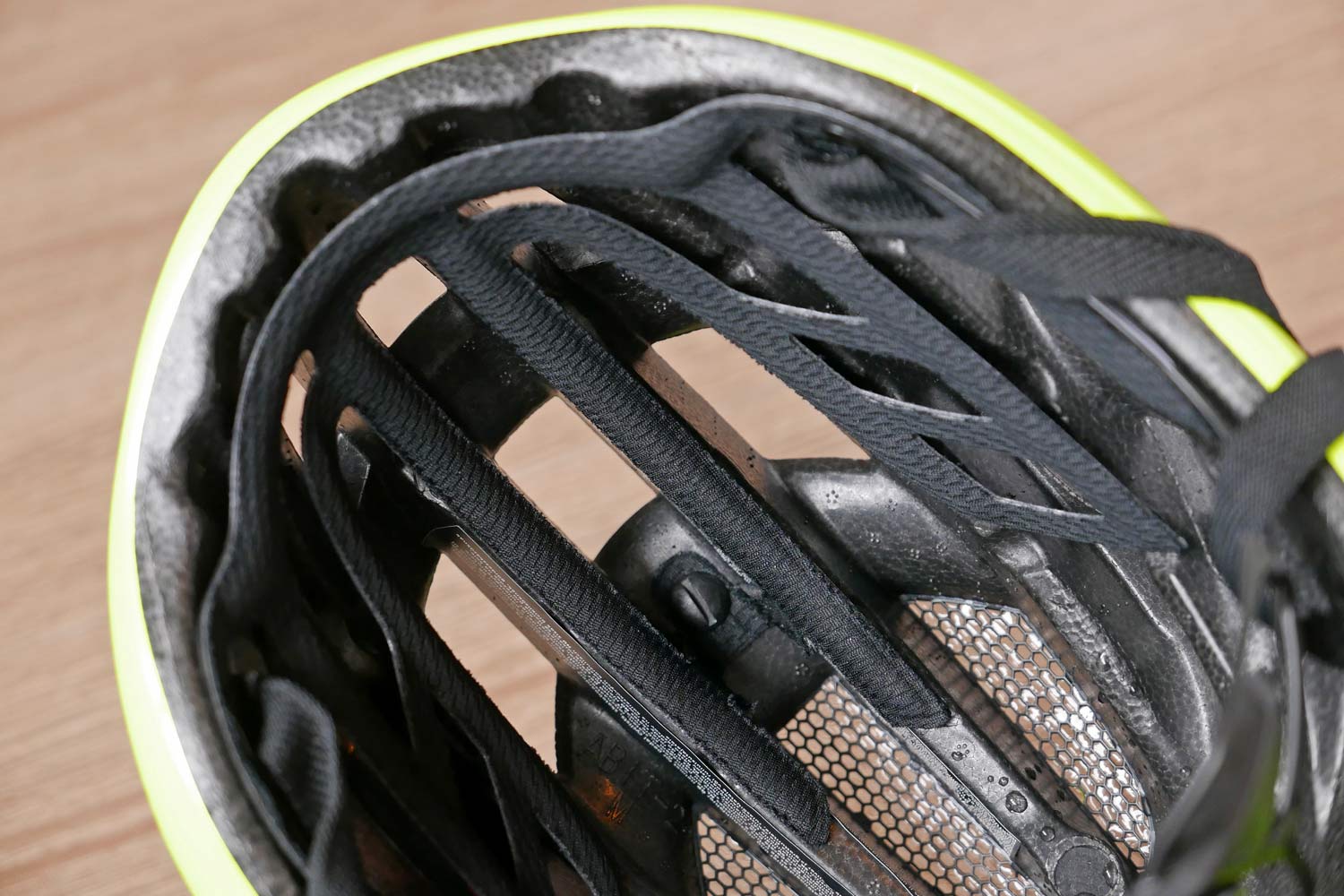 Inside the thin, single piece padding was one of my favorite features of the AirBreaker.
Inside the thin, single piece padding was one of my favorite features of the AirBreaker.
The laminated structure means the pad has a semi-rigid feel, but backed by a soft & thin contact with your skin, it does an excellent job of distributing pressure across the entire surface of the pad.
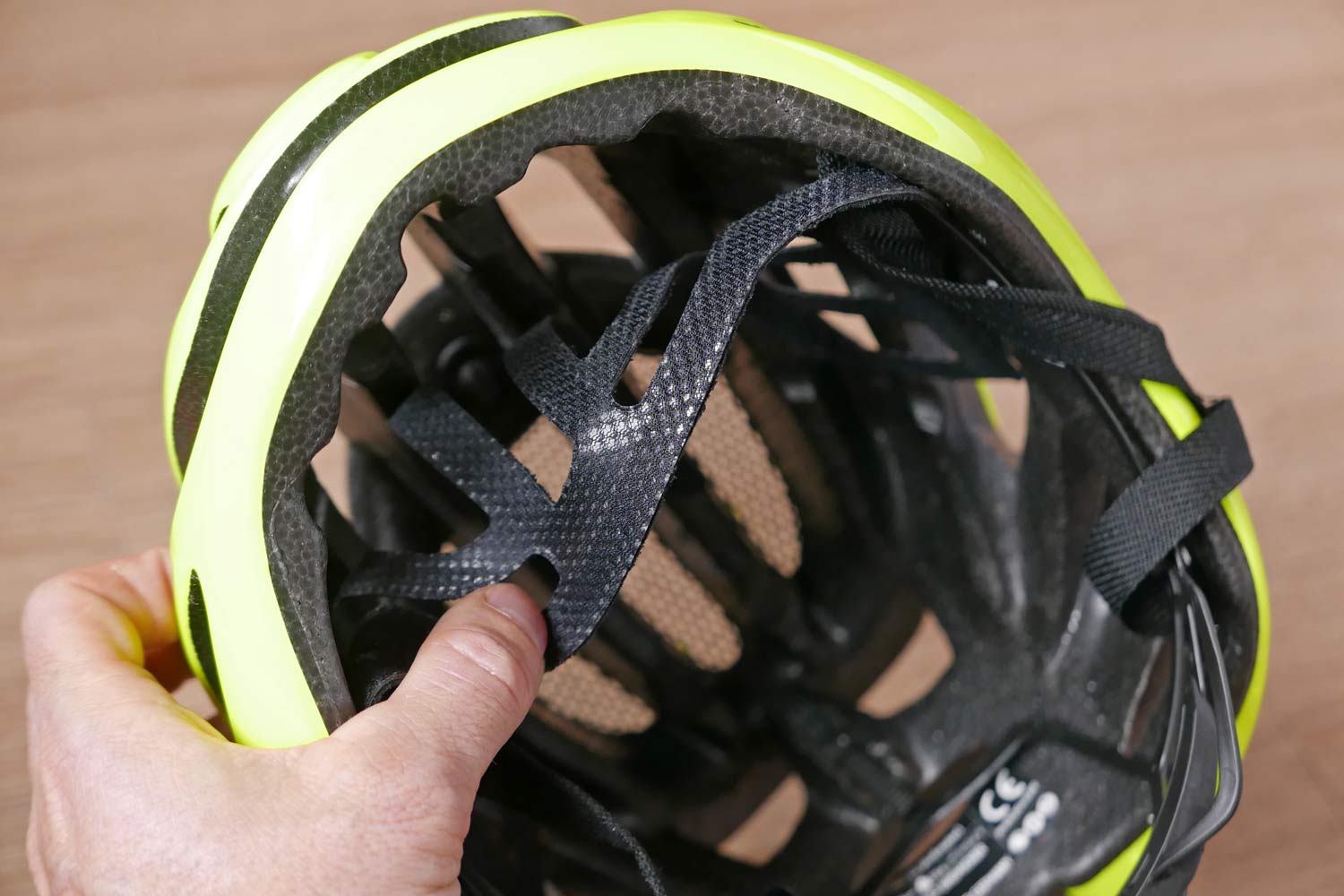 That structure also means that the one-piece pad does not need to be velcro-ed to the helmet shell. Instead it is attached only at the sides on both temples, and at the top of the head inside the middle ventilation channel. That resulted in no pressure point anywhere across my forehead, and also almost no indentation in my skin, even when cinching the retention down snugly for multi-hour rides.
That structure also means that the one-piece pad does not need to be velcro-ed to the helmet shell. Instead it is attached only at the sides on both temples, and at the top of the head inside the middle ventilation channel. That resulted in no pressure point anywhere across my forehead, and also almost no indentation in my skin, even when cinching the retention down snugly for multi-hour rides.
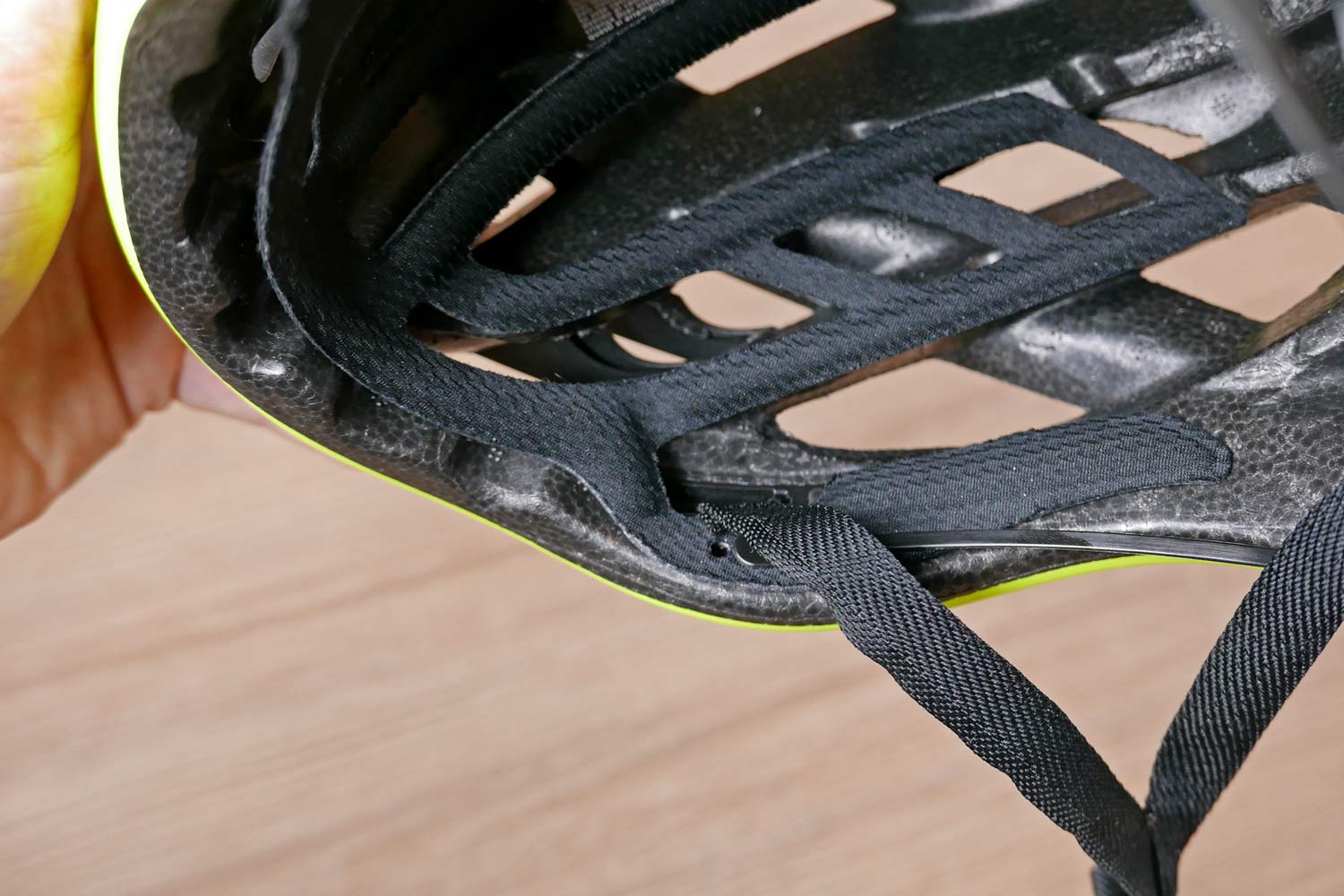 Another benefit of this pad construction is that it does not accumulate sweat – there just isn’t thick enough material to hold excess moisture. Instead, sweat wicks its way down onto the front helmet strap, where it ultimately drips down and off the bottom of the chin strap. I am quite used to sweat dripping down onto the inside of my glasses with many helmets, but I had no issue here at all.
Another benefit of this pad construction is that it does not accumulate sweat – there just isn’t thick enough material to hold excess moisture. Instead, sweat wicks its way down onto the front helmet strap, where it ultimately drips down and off the bottom of the chin strap. I am quite used to sweat dripping down onto the inside of my glasses with many helmets, but I had no issue here at all.
We’ve been riding in the new AirBreaker for the last six weeks in temperatures racing from around 10-28°C (50-82°F). Obviously, that’s not quite hot summer weather yet. But I have been alternating in other ventilated helmets in that time, and the AirBreaker has kept me coolest and best managed my sweat. I usually start out wearing a traditional cycling cap under new helmets to keep sweat out of my eyes/glasses, but now I am only using one to keep my head warm in colder & wetter spring weather. As hot weather returns, I’m leaving it up to the fast wicking one-piece internal pad liner, which is doing better than any other helmet I’ve ridden recently in managing sweat.
The AirBreaker is made in Italy and sells for 250€, in three sizes S, M & L. It comes in around 10 different standard color options (including this hi-vis neon yellow), plus special Movistar & World Champion stripe editions too. The US version doesn’t appear to be available just yet, but we expect it to make it stateside later this year.

